7 Reasons Southeast Asia is much better than Europe for budget travelers
As an American, Canadian, Australian, or even a Brit, the first major trip you dream of is tramping around continental Europe. And for good reason. Cities like Paris, Rome, Barcelona, Berlin, and Amsterdam should all be on everyone’s destination lists.
Many of us take a big trip or two that connects all those famous cities, and then we either keep going back or maybe we get lazy and start going to Mexican beach resorts or Hawaii year after year.
The thing is, if you’ve got at least a normal sense of adventure, and especially if your travel budget is limited, then Southeast Asia is likely a better choice for your next holiday. The common definition of that is Thailand, Vietnam, Cambodia, Laos, and Burma, but this is also true of Malaysia, Singapore, Indonesia, and the Philippines, not to mention India, Nepal, and Bangladesh as well.
1 – SE Asia is WAY cheaper than Europe
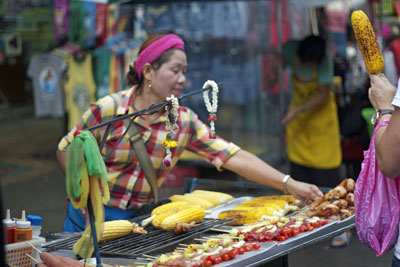
The cheapest city in Asia is Hanoi, where a backpacker can have a pretty decent time for a bit over US$10 per day. Compare that to, say, Paris, where the same group of expenses currently goes for US$75 per day, and you’ll recognize the value. Realistically, when you are in a super-cheap area you are more likely to splurge a bit more since everything on the scale is a deal.
Instead of a dorm bed for US$6 you can get a private room for US$10 per night, including in-room wi-fi, TV, a small fridge, and a big comfortable bed. You practically live like a king for US$30 a day in many cities in the region, compared to US$30 not quite even paying for a dorm bed alone in some European cities.
2 – The weather in SE Asia is good all year round
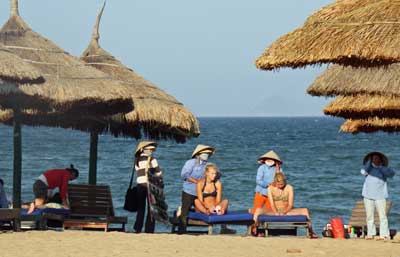
On the other hand, most of SE Asia is tropical and therefore has only 2 seasons. There’s the dry season (mostly from November through May) and the so-called wet season (June through October). However, the wet-season thing is rarely more than a minor inconvenience, and it actually brings temperatures down to more welcoming levels in some places.
During the wet season in SE Asia you’ll usually have a few days a week where it either pours for an hour overnight, or for an hour in the late afternoon. If it’s in the afternoon it’s a perfect excuse to pop into a sheltered restaurant for a US$1 beer or two while you wait. In very rare cases there can be flooding, and while this does create problems for locals, tourists are almost always able to get elsewhere or to higher ground in plenty of time.
3 – Crowds of tourists are very rare in SE Asia
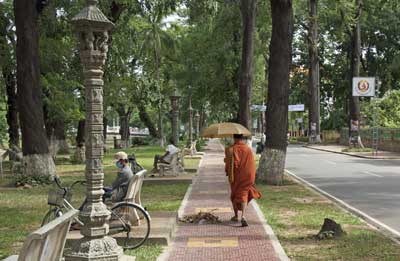
And it’s not just the beach cities that get jammed. Go to London or Prague or Amsterdam during those two months and you’ll be in a sea of fellow tourists. Add these things up and Europe only has a couple good months on either side of summer where the weather is decent and it’s not insanely crowded.
In SE Asia, you’ll find crowds in many islands and resort areas around Christmas, and in Bali and a few other places in August, but in most SE Asian cities you couldn’t really call it crowded for at least 11 months a year. This means that finding cheap hotels is always easy, usually with no reservations in advance, and intercity tourist buses can usually be booked the night before with few worries.
4 – There's no pressure to learn the languages in SE Asia
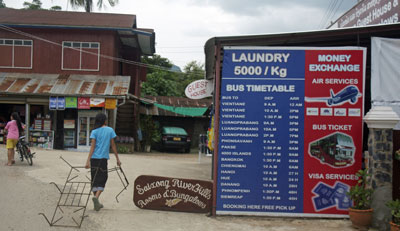
The same thing can be said for most of northern Europe (thanks to the English skills of residents there), but in countries like Spain, France, Italy, or Greece, you really are at a disadvantage if you don’t (or aren’t able to) absorb the local language. For some people it can be stressful or even make them much less outgoing, which can detract from the overall experience.
For better or worse, the people of SE Asia have accepted the fact that they have more economic opportunity if they speak at least some English, plus have all important signs and menus and such in English as well. Many of them love practicing their English on tourists, so it can be surprisingly easy to do anything you want and even make a few friends.
5 – SE Asia is way more exotic than Europe

With the exception of parts of Singapore and Kuala Lumpur, there is almost nothing in SE Asia that will NOT feel exotic to you. From the temples to the street food to open-air markets to even the kitchy souvenirs, nothing will look familiar, and this should be thrilling.
You can get eggs and toast for breakfast anywhere you go, but you might soon be hooked on spicy chicken noodle soup instead. It’s easy to start from scratch and take nothing for granted when you are exposed to a totally different way of doing things.
6 – Air Asia is cheap, and actually a good airline
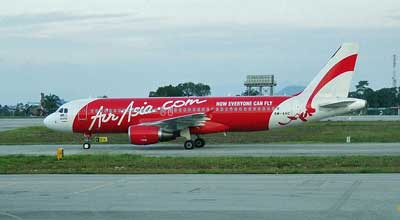
There are several low-cost carriers operating in SE Asia, and many aren’t much better than the European ones, but Air Asia is the biggest and best, and with a bit of advanced planning they can make your trip much cheaper and more efficient.
Like the others, Air Asia starts with extremely low prices and then the price keeps moving higher as the plane fills up. So booking a month or two in advance (or flying early in the morning or late in the evening) will get you a very low base fare for your flight, maybe US$30 between their major Kuala Lumpur and Bangkok hubs.
Their service is good and professional, and the planes aren’t as cramped as you might fear, but probably the best part is that the add-on prices are very low as well. Reserve a seat with extra legroom for maybe US$6 extra (instead of $50 on a US airline). Order a lunch for US$4 extra, and bring a big heavy suitcase with you for maybe US$10 extra. It makes you feel like a big shot when those upgrades are each so cheap that you can afford all of them.
7 – Your money is helping people who need it more
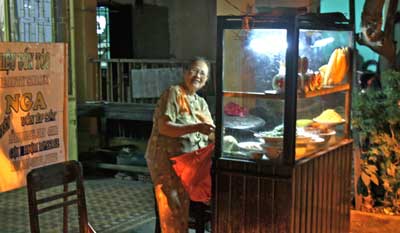
Seriously, most tourist restaurants in a country like Vietnam are owned and operated by a single family. Often it’s the mom running the operation with the children as the staff, while the father has another full-time job. It’s a nice feeling knowing your (meager) travel funds are going directly to pay the rent and buy food for an appreciative family that is cooking for you and serving you.
Air Asia photo by Simon_sees on Flickr

Roger,
Just tried to look at your friends Travelfish.org website but it didn’t show up. Is it still around? Thanks
David,
Travelfish.org is still very much going and being updated all the time. Maybe it was down temporarily when you checked. -Roger
Good site. Thanks for the tips. My best mate did Cambodia, Thailand, Laos a few years ago by himself and had the best time, so I am following in his footsteps in February. I am looking to avoid Bangkok however. I am told its dirty and smells bad, but lots of fun.
I am thinking of starting off in Koh Phi Phi as it has always been on my bucket list.
What is your favourite place in Thailand?
Bish,
Thanks. While I lived for a few months in Bangkok and also in Chiang Mai, and I’ve spent big chunks of time in Phuket and Ko Samui, I don’t really consider myself a Thailand expert. In other words, I’ve spent time in 4 or 5 of the most popular places, and not much in the smaller places and islands. I hear great things about Ko Phi Phi and also Ko Pha Ngan, although those are both also quite popular.
If you are going all the way to Thailand, you should really start with a few days in Bangkok and see it for yourself. It’s really an amazing city, and there are huge parts that are posh and filled with shopping centers. Parts are a bit dirty, but you really have to see it for yourself before you dismiss it. After that I’d head south to the islands and just try them out until you find a place you like. Don’t bother with Phuket though. It’s great for package sunshine holidays, but otherwise it’s kind of expensive and a bit of a mess.
Also, check the forums at Travelfish.org if you haven’t already. That site is run by a friend of mine and it’s by far the best source for all of Southeast Asia. Have a great trip. -Roger
After visiting Thailand and Vietnam. Include Philippine in you bucket list. There are plenty of affordable hotels to choose at with good service and also many places to visit. People can understand and speak English. Food and drinks are also available. Boracay is a must see. Coron & Puerta Princesa. Experience also the exciting Manila.
Exactly! Asia is the best place to travel. You must really check out the Koh Phi Phi island in thailand known for its wonderful beach. Must experience seeing the blue of the water,smelling the salty water and hearing the waves.
Hi! My name is Donald. I live in the US, I want to travel to SE Asia this summer, I think I’ll be traveling by myself which it gets me nervous but not to the point of not wanting to go. I want to visit Vietnam, Cambodia, Thailand and if I can the Philippines, but I don’t know where to start, I have read a lot on this site, it is great, but if somebody can give me any advice I will be really grateful! Thank you
Donald,
It’s understandable to be nervous about going to such a place for the first time. My best advice for you is to start by flying into Bangkok, which is a perfect introduction to the region because there are plenty of Westerners there and loads of tourists, although summer is kind of the off season for tourism. Plan on staying in the (infamous) Khaosan Road area, which is always filled with backpackers (although most people you’ll see are Thai locals, still), and spending at least a few days there. In a short time you’ll get the feel of the place and you’ll realize that almost everyone you meet there speaks at least some English. The Khao San Road area (as it’s sometimes spelled) is also the best place for cheap hostels and hotels, and it’s walking distance to the main tourist attractions also.
If you are going in summer you’ll be in the off season so it will be easy to find a bus, train, or flight to your next destination, which could be Chiang Mai (also easy), or Siem Reap (easy as well), or one of the resort islands. Any of those places are good next-steps to get the hang of how you’ll need to do things, and by then you’ll be ready for Vietnam or some of the more exotic places.
For an even more gentle introduction to Southeast Asia, and sometimes with even cheaper incoming flights, you could start in Kuala Lumpur. English is widely spoken in Malaysia, and most signs are in English, so after a few days there you’ll start feeling comfortable as well. I really like Kuala Lumpur, but Bangkok is more exciting and more interesting for a first-timer.
Hopefully this helps, and feel free to ask any other questions you might have. You’ll do great. -Roger
Hi, I have been desperate to go travelling for a long time now, my heart was initially set on Europe, but after a number of little trips i have noticed it would drain my funds fast and i want the experience to last a long long time. i started thinking about Thailand and i am finding all this information very useful so thank you for this! A couple of questions, i’m a big em festival fan, are they hard to find in Asia and do you know where i can find more info on them? Season and prices etc. Also, if i decide to buy a high spec camera for my travels would it be cheaper but the same quality if i bought it in Asia? I’m sorry if they’re naive questions. Thanks
This is a great post. Not only is Southeast Asia better value. It offers an experience that you simply cannot find in Europe. Originally from Europe myself I now live in Thailand. I would love it if you took a moment to check my blog
http://www.dontworryjusttravel.com/index.php/asiapacific
I’m from Malaysia and honestly I find SEA countries are exotic especially all those hidden gems (islands, food and places). Been to Bangkok and Bandung. Looking forward to my net SEA trip.
Roger, You have a nice site here. I hope you are able to expand in the future.
We spent a month in Cambodia and Thailand and found it to be the most fascinating place on earth. Our return trip will include Laos, Vietnam and a return to Thailand.
Tom, I think that’s the most common outcome after a first trip to SE Asia. Many people aren’t too interested at first, but once you try it you are hooked. And being able to eat and drink and stay in nice hotels on such a low daily budget is a delight. -Roger
I love Southeast Asia for theseexact reasons. I first went there at the beginning of a round-the-world trip a few years back, and the amount of money I spent there in 4 months, with all the beer, food, people and experiences cost me the same as what I spend in maybe 3 weeks in Australia! I can’t wait to go back to SE Asia again next year!!